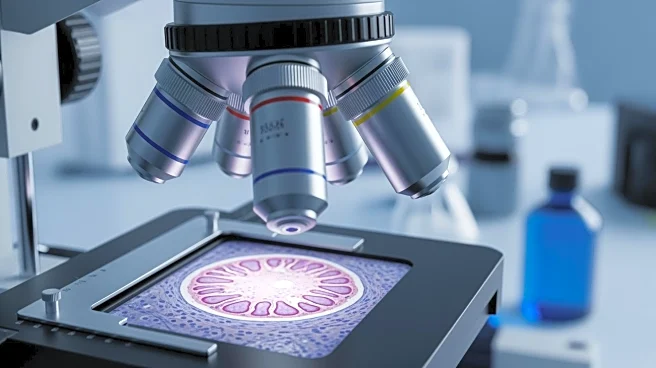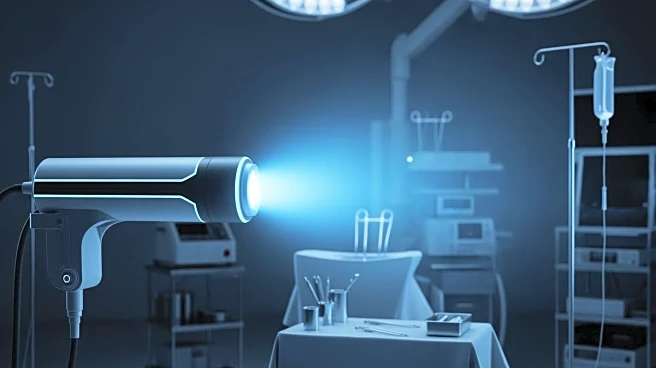What's Happening?
Recent developments in optical imaging technology have led to significant improvements in the analysis of kidney tissue pathology. A new label-free optical imaging platform has been introduced, combining
stimulated Raman scattering (SRS), second harmonic generation (SHG), and multi-photon autofluorescence (MPAF). This platform allows for the capture of spatial morphology and molecular landscapes of kidney tissue without the need for serial sectioning, which traditionally involves complex sample preparation and risks damaging the biopsy. The integration of multimodal imaging techniques provides a comprehensive view of the tissue, enhancing diagnostic accuracy and research capabilities.
Why It's Important?
The introduction of this advanced imaging platform is crucial for the field of molecular nephrology, as it addresses several limitations associated with traditional biopsy analysis methods. By eliminating the need for serial sectioning, the platform preserves the integrity of biopsy samples and reduces the risk of missing critical microstructures. This advancement is expected to improve treatment decisions and patient outcomes by providing more accurate and detailed diagnostic information. The ability to integrate various imaging modalities also facilitates the development of deep learning models that can further enhance diagnostic power.
What's Next?
The adoption of this label-free optical imaging platform in clinical settings could lead to widespread improvements in kidney pathology diagnostics. Researchers and clinicians may begin to explore its applications in other areas of pathology, potentially revolutionizing the way tissue samples are analyzed across various medical fields. As the technology becomes more accessible, it could drive further innovation in diagnostic techniques and contribute to personalized medicine approaches.
Beyond the Headlines
The ethical implications of improved diagnostic accuracy are significant, as they may lead to more equitable healthcare outcomes by reducing diagnostic errors. Additionally, the nondestructive nature of the imaging platform aligns with sustainable medical practices, minimizing waste and preserving valuable biological samples for future research.











